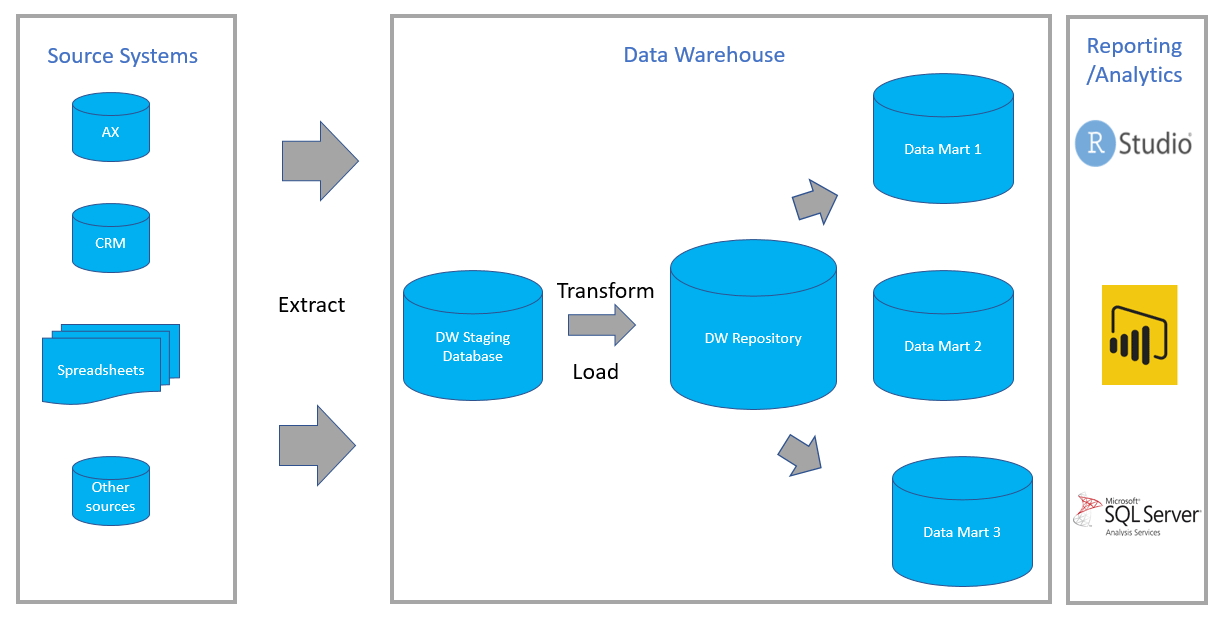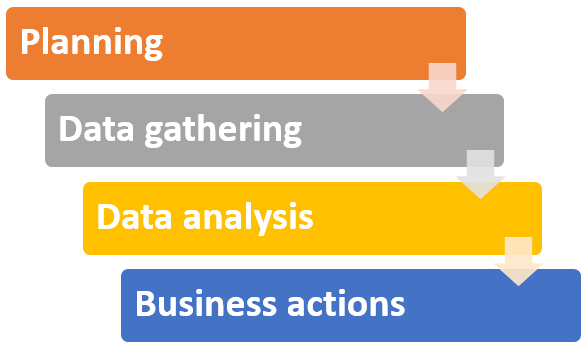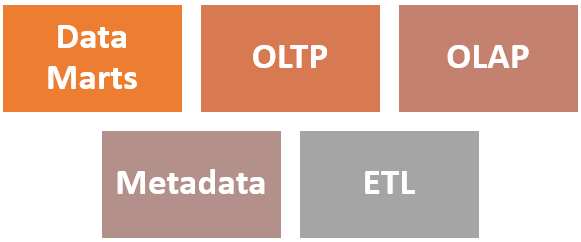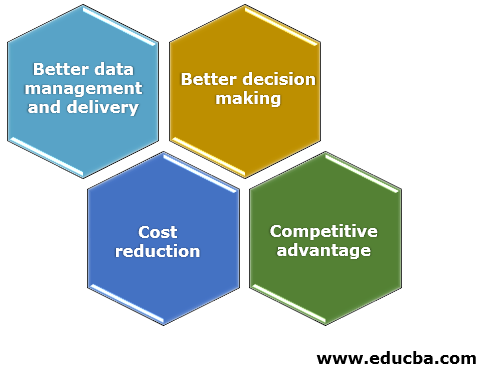Updated March 21, 2023
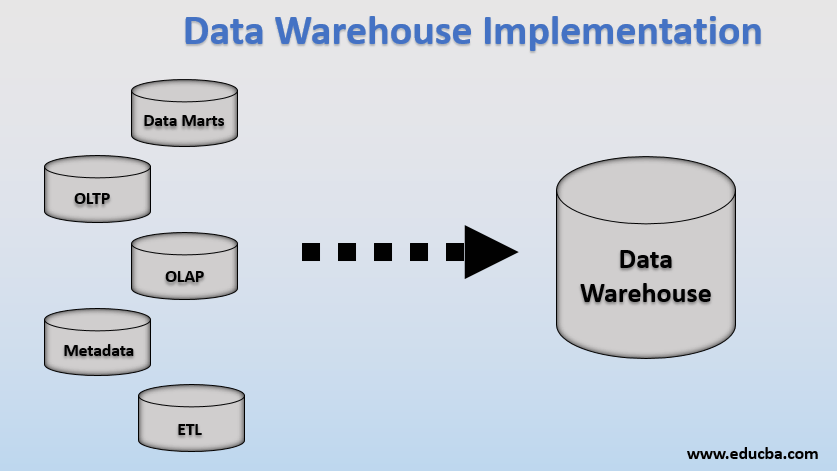
Introduction to Data Warehouse Implementation
Data Warehouse Implementation is a series of activities that are essential to create a fully functioning Data Warehouse, after classifying, analyzing and designing the Data Warehouse with respect to the requirements provided by the client. The various phases of Data Warehouse Implementation are ‘Planning’, ‘Data Gathering’, ‘Data Analysis’ and ‘Business Actions’. Every Data Warehouse needs a few important components, that needs to be defined while designing the implementation of the system, such as Data Marts, OLTP/ OLAP, ETL, Metadata, etc.
(Source: Stoneridge software,2019.)
As the volume of data, is increasing day by day the traditional ways and methods that were used to manage and manipulate data were becoming obsolete in nature, to overcome this problem we need to have a more effective and advanced data storage system that is with the use of data warehouses.
What is Data Warehouse Implementation?
Following are the explanation for what is data warehouse implementation:
- To identify and store the data in an effective manner for an organization, the concept of data warehousing comes into the picture. Let’s start with- what is a data warehouse? A data warehouse can be said is the storage area where huge volumes and amounts of data are stored for an organization that can help them in making decisions based on strong data analysis and business intelligence.
- It is a repository, which stores data from various sources with various formats and with the help of ETL tools convert this data into a standard format that can be used and for reporting and dashboarding purposes of the organization. This helps in generating meaningful insights out of the data collected by the organization.
- The process of establishing and implementing a data warehouse system in an organization is known as data warehouse implementation. Data warehousing is one of the most important components of the business intelligence process for an organization. The data warehousing implementation process requires a series of steps that need to be followed in a very effective manner. The processes are as follows:
1. Planning
Planning is one of the most important steps of a process. It helps in getting a pathway or the road map that we have to follow to achieve our described goals and objectives. It is the cornerstone of every successful project that is implemented in organizations. In case of the absence of sound planning, then there are high chances of failure of the project.
2. Data gathering
As data is available everywhere, but all the data available is not helpful for an organization. Data gathering is a process that involves the collection of data from various sources that can be used for data analysis and reporting.it involves a wide range of steps and it is a time-consuming process is we need to first identify the data that is going to be helpful for organization.
3. Data analysis
Once the data is collected, the next step which comes into the picture is data analysis. The process of generating and getting meaningful insights out of the day together is known as data analysis.
4. Business actions
The insights and information attained from data analysis are further used for making decisions for the organization. Higher the level of insights higher would be the efficiency of the business decisions and these decisions are going to decide the future of the organization.
Components of Data Warehouse Implementation
Some of the major components of data warehousing implementation are as follows:
1. Data Marts
A data mart is an important component of data warehousing. It can be said as the subset of a data warehouse that is focused on a particular Business line like sales, marketing, human resource, etc.
2. OLTP
The OLTP layer deals with the processing of transactional data on the task associated with an organization. It stands for online transactional processing. It deals with transactional data which is frequently changing in nature.
3. OLAP
OLAP layer helps in processing and analyzing the data stored in the database. It stands for the online analytical process. This layer deals with the master data which is not frequently changing in nature.
4. ETL
The ETL process helps in fetching the data from different sources into a single data warehouse. The process of extraction transformation and loading is used for data warehousing.
5. Metadata
The data of data is known as metadata. It helps in getting granularity of data. It helps in getting the information about the data. For example, if we have country data, then state data, city data, and the area level can be called the metadata of the data.
Advantages of Data Warehouse Implementation
There are many advantages and benefits that an organization can facilitate the use of a sound data warehousing system. Some of the most prominent benefits and advantages of using the data warehousing system in an organization are as follows:
1. Better data management and delivery
One of the most important advantages of using a data warehousing system in the organization is efficient data management and delivery. It helps in the storage of all types of data from different sources into a single base that can be used for analysis purposes.
2. Better decision making
The use of effective inside cell business intelligence the management of the organization can take effective decisions based on solid data analysis.
3. Cost reduction
It helps in avoiding duplication of works that ultimately helps in reducing the cost and increasing the efficiency of the organization.
4. Competitive advantage
As the organization is able to make effective decisions, they would be ready to out with their competitors as they are able to fully utilize their resources and can focus on activities in a better way.
Conclusion
It can be said and concluded that with the use of a sound data warehouse implementation in the organization, the organization can easily increase its efficiency, can easily achieve its goals and objectives with minimal efforts and can do wonders for the organization. With the use of effective data warehouse management, one can take advantage of numerous data available and can reach the heights of success.
Recommended Articles
This is a guide to Data Warehouse Implementation. Here we discuss what is Data Warehouse Implementation with component and advantages. You can also go through our other related articles to learn more-
